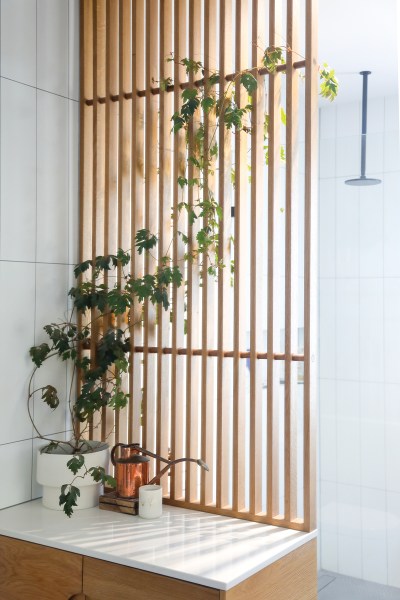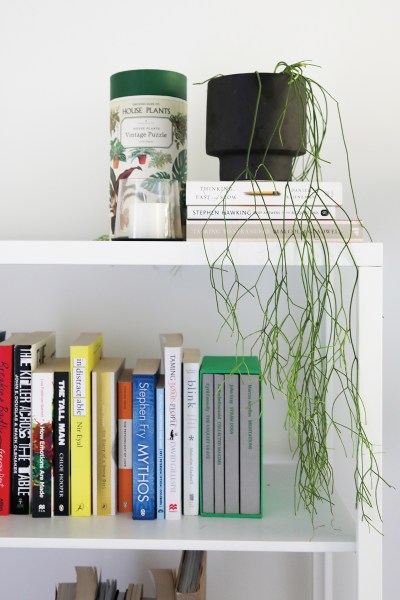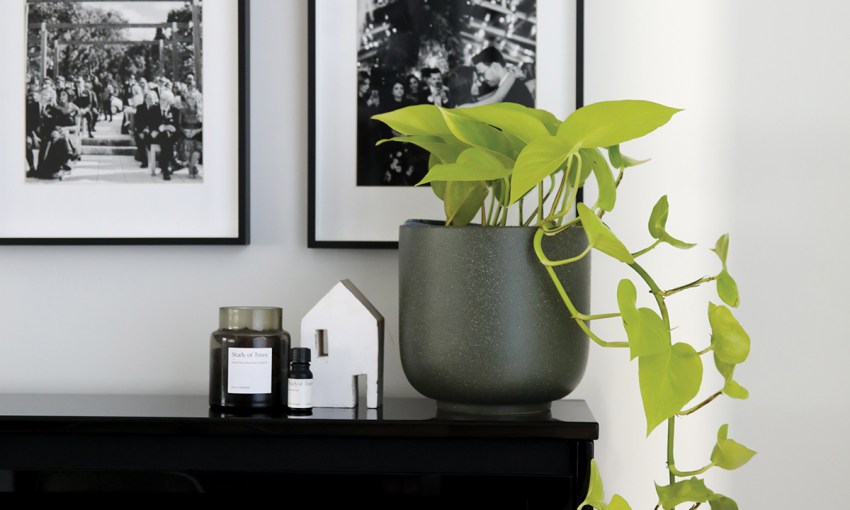Trailing and cascading indoor plants are the perfect solution for transforming small spaces and high places into your own tranquil oasis.
How to lift your indoor plant game
It is no secret that indoor plants are huge in the world of interior decor right now, so you cannot be blamed if you’re slowly running out of floor space to display them.
But have you considered lifting your plant game by adding some trailing and cascading plants to your collection? Not only are these types of plants a great way to save space, but they add texture and interest to areas that may be hard to decorate.

Hanging pots from the ceiling in empty corners or to frame windows are popular places to display cascading plants. To create a real statement, cluster a variety of plants with contrasting colours and foliage in a bright corner, choosing different pots and hanging them from the ceiling at different levels.
Keep in mind that hanging pots can become heavy, so ensure you invest in sturdy hooks, position them in ceiling rafters and get professional assistance if required.
However, if you don’t wish to put holes in your ceiling, or are in a rental, don’t despair, there are plenty of ways to get creative with cascading and trailing plants. Look for bare spaces on shelves, bookcases and other tall furniture items. Place a trailing plant high upon these items and let your plants waterfall down. Also look for natural places to hang them, such as doorknobs, a coat stand or wall hooks.
Alternatively, you may have spaces to train your plants up, such as a room divider, decorative ladder or a DIY trellis to display in front of an empty wall.
If you’d like to try something different, forgo traditional pots, and research the Japanese method of Kokedama. A Kokedama is made by taking the plant out of the pot and forming its soil into a ball, covering it with moss, tying everything up with string, and then hanging. To care for these beauties, simply check the weight and if it feels light, submerge the soil ball into water to reinvigorate the plant.
While choosing a location for your plants, ensure you consider how easy they will be to get to, to tend and water. The easier it is, the more likely you are to keep them healthy. To water, invest in a long-handled watering can, or take them all down and water in the shower or kitchen sink, and rehang.

cascade
So, with all these creative ideas to inject some cascading greenery into your spaces, what are some of the best plants to use? To help get your ideas flowing, the following plants are a great starting point as they are all readily available from your local garden centre and are reasonably easy to maintain.
Devil’s ivy, Epipremnum aureum
This lush evergreen plant is one of the most popular trailing plants to add to your home and it’s not hard to see why – it’s attractive, its leaves cascade beautifully and it’s easy to care for. Its long vines have glossy green, heart-shaped leaves and depending the variety, can showcase a marble effect of yellow or white. You can leave these plants to grow wild with long vines, or keep them trimmed to create a bushy effect, whichever you choose, it’s the perfect plant for a high spot in your home.
Boston fern, Nephrolepis exaltata
Are you looking for a showstopper botanical display? Go no further than a Boston fern. Its vibrant, bright green, serrated fronds bush out to create a lush spectacle. Preferring moist soil, indirect sunlight and thriving in humid conditions, it is the perfect addition to hang in a bathroom over a vanity or bathtub. If you notice any drooping, try spraying it with some water to create humidity.
Grape ivy, cissus “Ellen Danica”
You won’t be disappointed if you add a cissus to your indoor jungle collection. It is a fast-growing plant with masses of shiny, oak-shaped leaves that cascade creating a curtain effect, or it can be trained upward, meaning it can be used in a variety of spaces around your home. It is ideal for a beginner, as it will happily live in low levels of light, and requires very minimal care. Allow your cissus to slightly dry out between watering, especially through winter.

Spider plant, Chlorophytum comosum
This popular ’70s plant has made a huge comeback, and for fantastic reason. It is not only quite impressive as it grows, it is also exceptionally hardy being able to grow in less-than-ideal conditions. Despite preferring a bright light position, they will still survive in low light spots making this plant suitable for a range of areas around your home. So, pick up a spider plant and let its beautiful thin, curved foliage cascade over your chosen pot.
Chain of hearts, Ceropegia woodii
With gorgeous heart-shaped, distinctively-patterned leaves, this plant will steal your heart! It’s a great one to hang up high as dainty vines with mottled leaves in hues of green, grey, purple and pink will waterfall over the pot. Although considered easy to care for, this plant does need to be placed in ample bright light and watered sparingly to truly thrive. Allow the pot to completely dry before watering again, and lessen your watering regime in winter.

Mistletoe cactus, Rhipsalis baccifera
If you’re after a real conversation starter, the long, spaghetti-like vines of the mistletoe cactus are for you. Although technically a cactus, it is found naturally in tropical forests, so ensure you keep it moist in the warmer months and in a partially shady spot, otherwise this is quite a non-fussy plant. The unique, thin foliage of this plant cascades to lengths over one metre, so for a stunning waterfall effect, find a high shelf or the top of a bookcase and let it trail down adding a soft, delicate touch to your space.
No matter what species you choose, adding a cascading or trailing plant is the perfect way to create an eye-catching display to transform high shelves, bookcases, and windowsills, or any tight and neglected spaces. They will add colour, depth and a sense of tranquillity to any space, and help you create a layered indoor jungle in no time.
This story first appeared in the May 2021 issue of SALIFE magazine.



